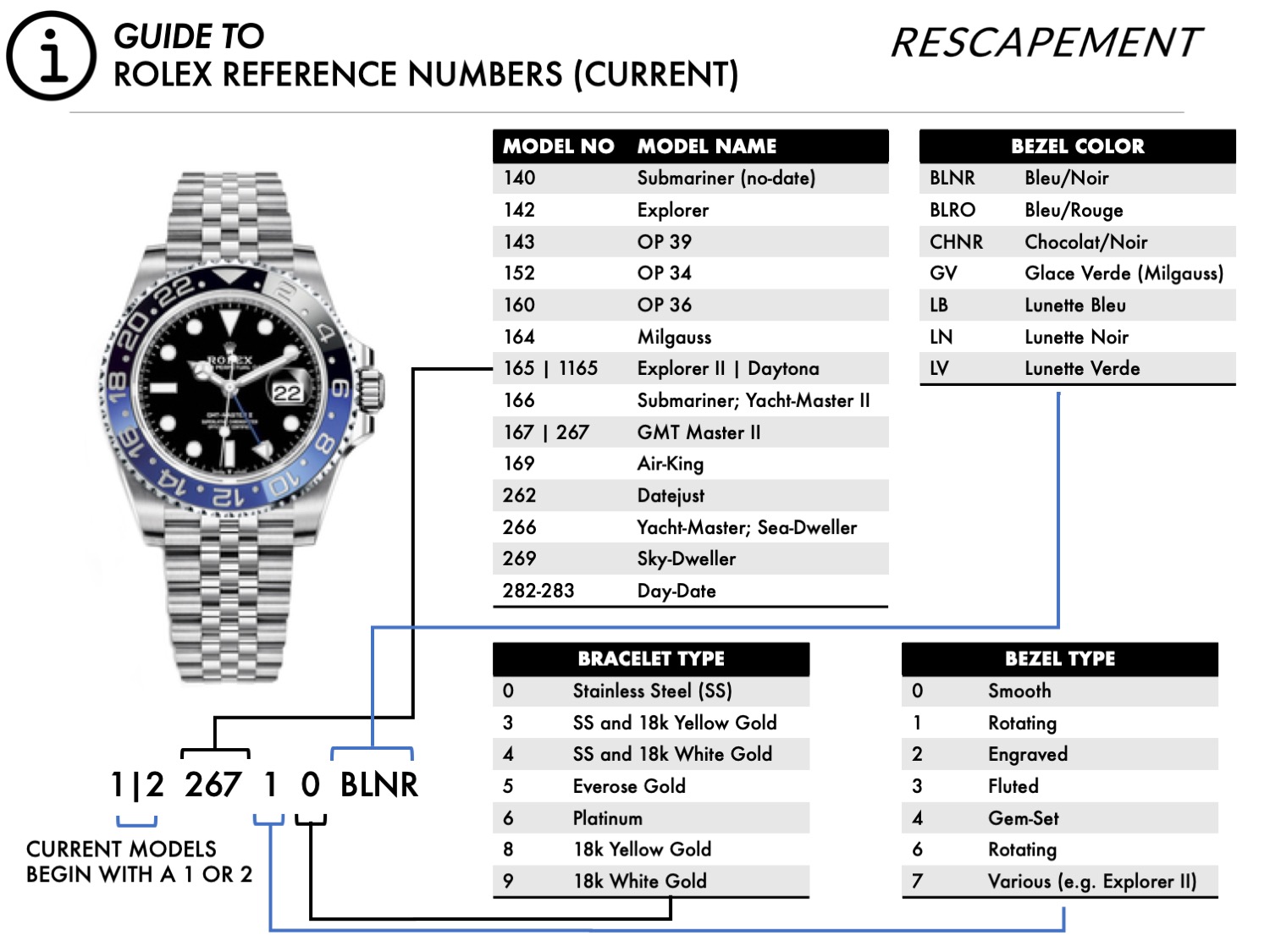Nowadays most Rolex models have a 6-digit reference number, beginning with a “1” (or more recently, “2”). The next three digits represent the model number (usually also starting with a “1”, though newer models now use “2”). After that, the reference number lets you know the bezel type, bracelet type, followed by letters to indicate bezel color (if necessary).
We’ve come a long way from the 4-digit Explorer 1016, Submariner 5513, and Milgauss 1019. But, with the way people are still able to rattle off Rolex reference numbers like it’s a party trick, it can be helpful to understand the method behind the madness; if you don’t recognize the exact reference number, perhaps you can narrow it down the the metal, model, or bezel-type this person is talking about.
Rolex moved to the 6-digit reference number system around the turn of the century. True vintage Rolex models have 4-digit reference numbers. This is true from Rolex’s early days up until the 1980s, when Rolex started to modernize most of its collection, and revamped its reference numbering system along with it.
For example, in 1988, Rolex discontinued its hand-winding Daytona models (with 4-digit reference numbers) for the self-winding 16500 series, introducing the new Rolex caliber caliber 4030 movement, based on Zenith’s caliber 400. In 1989 the Explorer 1016 was discontinued in favor of the Reference 14270.
And before you comment, this guide is only for current models (eg I know old Air-Kings are 140).
